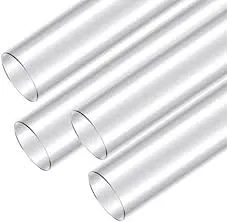Oct . 16, 2024 23:17 Back to list
hdpe pipe jointing
HDPE Pipe Jointing A Comprehensive Guide
High-Density Polyethylene (HDPE) pipes are increasingly popular in various industries due to their exceptional durability, flexibility, and resistance to corrosion and chemicals. One of the critical aspects of utilizing HDPE pipes efficiently is jointing, which ensures a secure and leak-free connection between segments. This article will delve into the different methods of HDPE pipe jointing, their advantages, and important considerations for achieving optimal results.
Understanding HDPE Pipes
HDPE is a type of plastic used for a wide range of applications, particularly in water and gas distribution systems. The material's high tensile strength and lightweight nature make it an excellent choice for pipelines transported over long distances. HDPE pipes are also resistant to cracking and capable of withstanding harsh environmental conditions, making them suitable for underground installations.
Jointing Methods
There are several methods of jointing HDPE pipes, each with its distinct advantages
1. Butt Fusion Welding Butt fusion is one of the most common methods of joining HDPE pipes. In this technique, the ends of two pipes are heated until they reach a molten state and then pressed together to form a strong joint. The result is a seamless connection that eliminates the potential for leaks. This method is suitable for large-diameter pipes and is often used in municipal water systems and industrial applications. However, proper equipment and skilled technicians are required to ensure that the jointing process is executed correctly.
2. Electrofusion Jointing Electrofusion involves the use of electrical current to heat specially designed fittings that are placed around the pipe ends. When the fittings reach a certain temperature, the HDPE melts, allowing the pipes to bond securely. This method is particularly advantageous for smaller diameter pipes and complex installations, as it offers flexibility and can be employed in confined spaces. Electrofusion joints are also known for their reliability and capability to withstand internal pressures.
3. Mechanical Jointing Mechanical joints utilize fittings (such as flanges and couplings) that connect the pipe segments without the need for heating. This method is best for temporary installations or areas where a quick replacement is necessary. Mechanical joints are also advantageous when disassembly is desired for maintenance or reconfiguration. However, they may not offer the same level of integrity as welded joints, especially in high-pressure applications.
4. Socket Fusion Socket fusion is another method where the ends of the pipes are heated and then inserted into a fitting, creating a fusion joint. This technique is commonly applied in smaller diameter pipes and is well-suited for installations where space is limited. Like butt fusion, socket fusion joints provide a seamless connection, making them resistant to leaks.
Advantages of HDPE Pipe Jointing
hdpe pipe jointing

The jointing methods used for HDPE pipes offer many benefits
- Durability Properly executed joints can significantly extend the lifespan of the pipeline system, minimizing the risk of leaks and failures. - Corrosion Resistance HDPE offers inherent resistance to a variety of chemicals, enhancing the longevity of joint connections.
- Flexibility The lightweight nature of HDPE allows for easier handling and installation, particularly in challenging terrain or confined spaces.
Key Considerations
To achieve optimal results in HDPE pipe jointing, several factors must be taken into account
- Material Compatibility It is essential to ensure that all jointing materials are compatible with HDPE to prevent degradation or joint failure.
- Temperature and Cooling Adhering to the recommended temperature settings for heating and cooling is critical to achieving a strong bond.
- Inspection and Testing Conducting thorough inspections and non-destructive testing (NDT) can help identify potential weaknesses in joints before the system is put into operation.
Conclusion
HDPE pipe jointing is a vital component in establishing reliable pipeline systems across various applications. By understanding the different jointing methods and their respective advantages, professionals in the field can make informed decisions, ensuring the longevity and integrity of their installations. With the right techniques and considerations, HDPE jointing can provide a robust solution to meet the demands of modern infrastructure.
-
Durable PP Rigid Sheet: Lightweight, Chemical Resistant Solutions
NewsAug.21,2025
-
PVC Grey Sheet for Extraction: Chemical Resistant & Durable
NewsAug.19,2025
-
Durable PVC Pipe Fittings for Plumbing & Irrigation Needs
NewsAug.18,2025
-
HDPE Steel Belt Reinforced Spiral Corrugated Pipe | High Strength
NewsAug.17,2025
-
HDPE Pipe Fittings: Durable, Leak-Proof Solutions
NewsAug.16,2025
-
Premium CPVC Sheet: High-Temp & Chemical Resistant Solutions
NewsAug.15,2025

